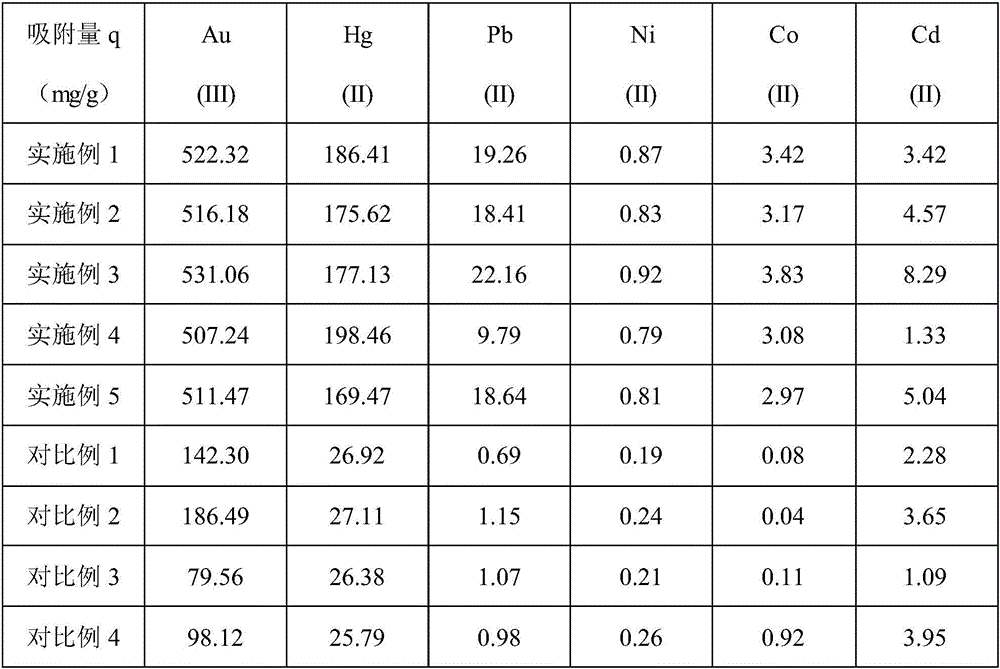Composite for treating heavy metal waste water
A composite material and wastewater treatment technology, applied in water/sewage treatment, adsorbed water/sewage treatment, reduced water/sewage treatment, etc., can solve the problems of low adsorption capacity, cumbersome operation, large dosage, etc., and achieve strong adsorption capacity and Reducing ability, strong ability to reduce heavy metals, and fast reaction rate
- Summary
- Abstract
- Description
- Claims
- Application Information
AI Technical Summary
Problems solved by technology
Method used
Image
Examples
Embodiment 1
[0021] A composite material for heavy metal wastewater treatment, which is composed of the following raw materials in parts by weight: 20 parts of ordinary soil, 15 parts of limestone, 10 parts of zeolite powder, 20 parts of mesoporous molecular sieves, 40 parts of ethylenediaminetetraacetic acid metal sodium salt, 70 parts of sodium chloride, 30 parts of magnesium chloride.
[0022] The preparation method of the composite material for the treatment of heavy metal wastewater, the specific steps are as follows:
[0023] (1) take each raw material according to parts by weight;
[0024] (2) Dissolve ethylenediaminetetraacetic acid metal sodium salt in deionized water at a mass ratio of 1:1 to prepare a ethylenediaminetetraacetic acid metal sodium salt solution, and then impregnate mesoporous molecular sieves into ethylenediaminetetraacetic acid sodium metal salt Immerse in the salt solution for 10 hours, so that the ethylenediaminetetraacetic acid metal sodium salt solution is s...
Embodiment 2
[0030] A composite material for heavy metal wastewater treatment, which is composed of the following raw materials in parts by weight: 25 parts of ordinary soil, 20 parts of limestone, 15 parts of zeolite powder, 30 parts of mesoporous molecular sieve, 50 parts of ethylenediaminetetraacetic acid metal sodium salt, 75 parts of sodium chloride, 40 parts of magnesium chloride.
[0031] The preparation method of the composite material for the treatment of heavy metal wastewater, the specific steps are as follows:
[0032] (1) take each raw material according to parts by weight;
[0033] (2) Dissolve ethylenediaminetetraacetic acid metal sodium salt in deionized water at a mass ratio of 1.2:1 to prepare a ethylenediaminetetraacetic acid metal sodium salt solution, and then impregnate mesoporous molecular sieves into ethylenediaminetetraacetic acid sodium metal salt Immerse in the salt solution for 12 hours, so that the ethylenediaminetetraacetic acid metal sodium salt solution is ...
Embodiment 3
[0039]A composite material for heavy metal wastewater treatment, which is composed of the following raw materials in parts by weight: 30 parts of ordinary soil, 25 parts of limestone, 20 parts of zeolite powder, 40 parts of mesoporous molecular sieve, 60 parts of ethylenediaminetetraacetic acid metal sodium salt, 80 parts of sodium chloride, 50 parts of magnesium chloride.
[0040] The preparation method of the composite material for the treatment of heavy metal wastewater, the specific steps are as follows:
[0041] (1) take each raw material according to parts by weight;
[0042] (2) Dissolve metal sodium salt of ethylenediaminetetraacetic acid in deionized water at a mass ratio of 1.5:1 to prepare a sodium metal salt solution of ethylenediaminetetraacetic acid, and then impregnate mesoporous molecular sieves into sodium metal ethylenediaminetetraacetic acid Immerse in the salt solution for 14 hours, so that the ethylenediaminetetraacetic acid metal sodium salt solution is ...
PUM
 Login to View More
Login to View More Abstract
Description
Claims
Application Information
 Login to View More
Login to View More - R&D Engineer
- R&D Manager
- IP Professional
- Industry Leading Data Capabilities
- Powerful AI technology
- Patent DNA Extraction
Browse by: Latest US Patents, China's latest patents, Technical Efficacy Thesaurus, Application Domain, Technology Topic, Popular Technical Reports.
© 2024 PatSnap. All rights reserved.Legal|Privacy policy|Modern Slavery Act Transparency Statement|Sitemap|About US| Contact US: help@patsnap.com









